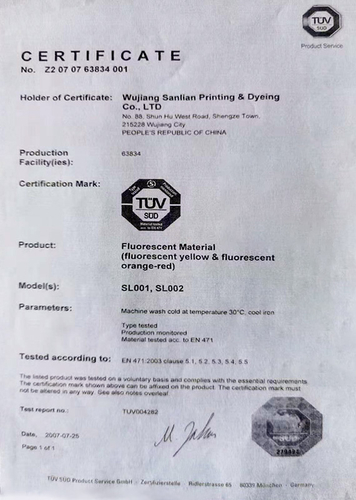Proper Cleaning and Maintenance of Your Safety Inflatable Vest for Optimal Performance
Cleaning Your Safety Inflatable Vest
Rinse with Fresh Water
After each use, especially in saltwater or chlorinated environments, thoroughly rinse your Safety Inflatable Vest with fresh water. This step removes salt residues, sand, dirt, and other contaminants that could degrade the material over time. Pay close attention to the inflatable compartments, valves, and seams during rinsing.
Remove Excess Dirt
Use a soft cloth or sponge to gently wipe away any visible dirt or debris from the surface of the vest. Avoid abrasive materials, as they may damage the impervious cloth layers designed to enhance durability and water resistance.
Use Mild Soap if Necessary
If the vest requires deeper cleaning, prepare a solution of mild soap or detergent mixed with warm water. Gently scrub the exterior using a soft brush or sponge. Harsh chemicals, bleach, or solvents should be avoided, as they can compromise the integrity of the materials.
Thoroughly Rinse Again
Ensure all soap residue is removed by rinsing the vest thoroughly with clean water. Residual soap can attract dirt and lead to premature wear of the fabric.
Dry Properly
Hang the Safety Inflatable Vest in a shaded, well-ventilated area to air dry completely. Direct sunlight and heat sources should be avoided, as prolonged exposure to UV rays can weaken the fabric. Do not use a dryer, as the heat can damage the inflatable components.
Inspect Inflation Components
While cleaning, inspect the inflatable mouth, one-way valve, balloon, and connecting systems for signs of damage, blockages, or leaks. Verify that the valve operates correctly and seals tightly to prevent air loss.
Maintenance Tips for Long-Term Use
Regular Inspections
Conduct periodic inspections of the Safety Inflatable Vest for tears, punctures, or general wear and tear. Focus on high-stress areas such as seams, the inflatable compartment, and the one-way valve. Early detection of issues allows for timely repairs or replacements.
Proper Storage
Store the Safety Inflatable Vest in a cool, dry place away from direct sunlight, moisture, and sharp objects. Use its original storage bag or a breathable container to protect it from dust and environmental factors.
Test Before Use
Before every outing or after long-term storage, test the inflation system to ensure proper functionality. Inflate the vest, check for leaks, and confirm that the one-way valve operates as intended. A functioning vest is essential for personal safety.
Avoid Overloading
Refrain from attaching unnecessary items or overloading the vest, as this can strain the structure and reduce its effectiveness.
Replace Damaged Parts Promptly
If you notice any damage, such as punctures or malfunctioning valves, repair or replace the affected parts immediately. For complex issues, consult the manufacturer or a certified professional to restore the vest's full functionality.
Additional Considerations
Do Not Iron or Press : The materials used in the Safety Inflatable Vest are not designed to withstand high heat or pressure, so avoid ironing or pressing the vest.
Follow Manufacturer Guidelines : Always adhere to the specific care instructions provided by the manufacturer to ensure optimal performance and compliance with safety standards.

 English
English 简体中文
简体中文













 3rd Floor, East Gate, No. 2599 Park Road, Sheng Ze Town, Wu Jiang District, Suzhou City, Jiangsu Province
3rd Floor, East Gate, No. 2599 Park Road, Sheng Ze Town, Wu Jiang District, Suzhou City, Jiangsu Province  +86- 0512-63519080
+86- 0512-63519080
 +86-13584404311
+86-13584404311 